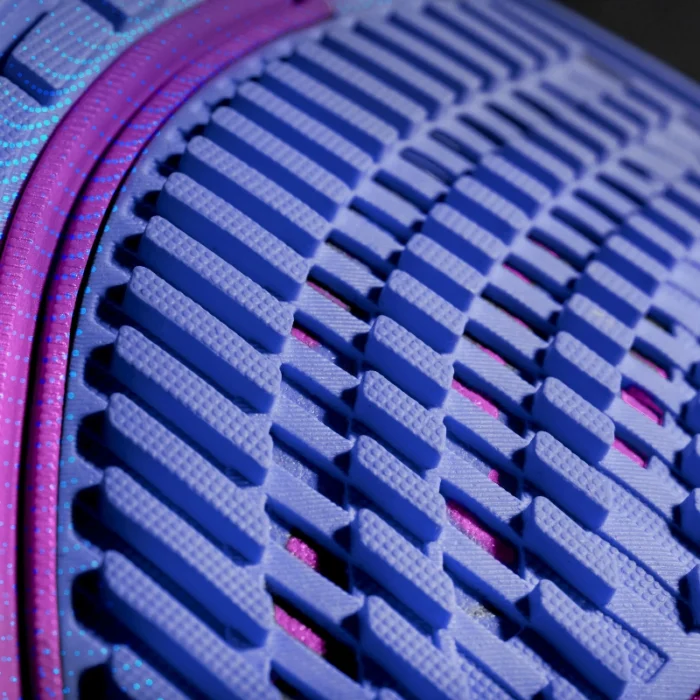rPET Plastics 101
3.16.2023
3.16.2023

Ah, recycling — that transformative process that turns our used materials into something completely new. Recycling expands the horizons of single-use products by giving them another life, another chance to be useful. One of the most exciting recycled materials on the market is rPET, or, to use the technical term, recycled polyethylene terephthalate. Recycled plastics may not seem like an obvious topic to get excited about, but the promise of this incredible material opens up a whole new world of possibilities to make a positive impact on the planet.
What are these possibilities? To fully grasp the effects that rPET can have, it helps to know exactly what it is. So, without further ado, let’s take a closer look at this incredible material with world-changing capabilities. Consider this your quick lesson on rPET plastic 101.
Recycled polyethylene terephthalate, or rPET, is made from recycled, virgin PET, a polymer of ethylene glycol and terephthalic acid. The most common plastic resin, virgin PET, is created from crude oil and natural gas extracted from the Earth. To get usable rPET from a recycled PET item, like a soda bottle, the plastic goes through a transformation in a recycling facility.
Before arriving at the recycling facility, PET materials need to be sorted out from other recycled items. PET is highly recyclable and identified by its recycling code 1. Is there a plastic water or soda bottle within reach around you? Go ahead — pick it up and take a look. Chances are that somewhere on the bottle, you’ll see that classic recycling icon with the number 1 in the middle. (Recycling tip of the day: Before tossing a bottle into a recycling bin, be sure to remove the cap and label first. These parts are made from different types of plastic, and they cannot be completely transformed into rPET.)
At the recycling facility, PET is ground up and put through a separation process to remove any non-PET that could cause impurities or issues with the final product. The PET is then cleaned, dried, and further processed to transform it into its desired rPET state — typically a resin pellet. These rPET pellets serve as the base of future rPET products, which could be anything from carpet fibers to food and beverage containers.
Yet another fascinating thing about PET and rPET items is that they can be recycled repeatedly. So after you finish that beverage in an rPET bottle, which also falls under recycling code 1, you can recycle it just as you would a virgin PET bottle.
rPET boasts many of the same properties as its non-recycled counterpart. PET is widely used, especially for food and beverage containers, because it is clear, durable, and lightweight. On the whole, rPET is all of these things as well. Of course, because it is made of used PET, some impurities can work their way into the recycled product. For this reason, rPET is not always as clear as products made of virgin PET. However, it is still incredibly lightweight and durable, making it an ideal material for many products.
Speaking of products, you may be curious about what rPET can be turned into. It may surprise you that you have probably already encountered products made entirely — or at least partially — from rPET. Here’s a list of just a few household items that can be made with rPET:
With the latest advances in rPET technology, the possibilities are endless!
As rPET becomes more prevalent in the items that we use every day, you may find yourself wondering again — what are the real, tangible benefits that rPET offers? What are the positive impacts that rPET can make on the planet?
We are delighted that you asked.
Allow us to introduce you to the ripple effects of rPET.
As you might imagine, rPET helps keep materials made of virgin PET out of landfills, where they can take over 700 years to break down. However, the impacts don’t end with waste reduction. Creating a bottle with rPET uses 75% less energy than manufacturing one with PET. Over time, this efficiency can also decrease the demand for crude oil and natural gas used to make virgin PET, which means less need to extract these things from the earth. Additionally, because rPET is more lightweight than other materials, more products packaged with rPET can be shipped simultaneously than products made with glass or metal. That means that it can help cut down on transportation costs and CO2 emissions.
So, rPET can minimize the amount of PET in landfills, lower the need to extract crude oil and natural gas, reduce energy consumption, save transportation costs, and reduce CO2 emissions into the atmosphere. How’s that for a positive impact?
At Verdeco, we believe our efforts in rPET are making a positive impact around the world.
We are committed to producing high-quality rPET that can be widely used in a variety of applications. Our production process is customer-centric, and the rPET products we create meet specific demands in the market. We don’t just develop products without an end goal; instead, we talk with companies with specific needs and customize rPET solutions that they can use. Simply put, we’re addressing real-world issues in real time.
We see a world where rPET is the sustainable standard, a world where the rPET ripple effect is making positive changes right before our eyes.
To learn more about Verdeco and how we’re changing the world, visit verdecorecycling.com.
Elevate your commitment to sustainability while upholding your high standards of quality. Talk with us today to discover the possibilities.